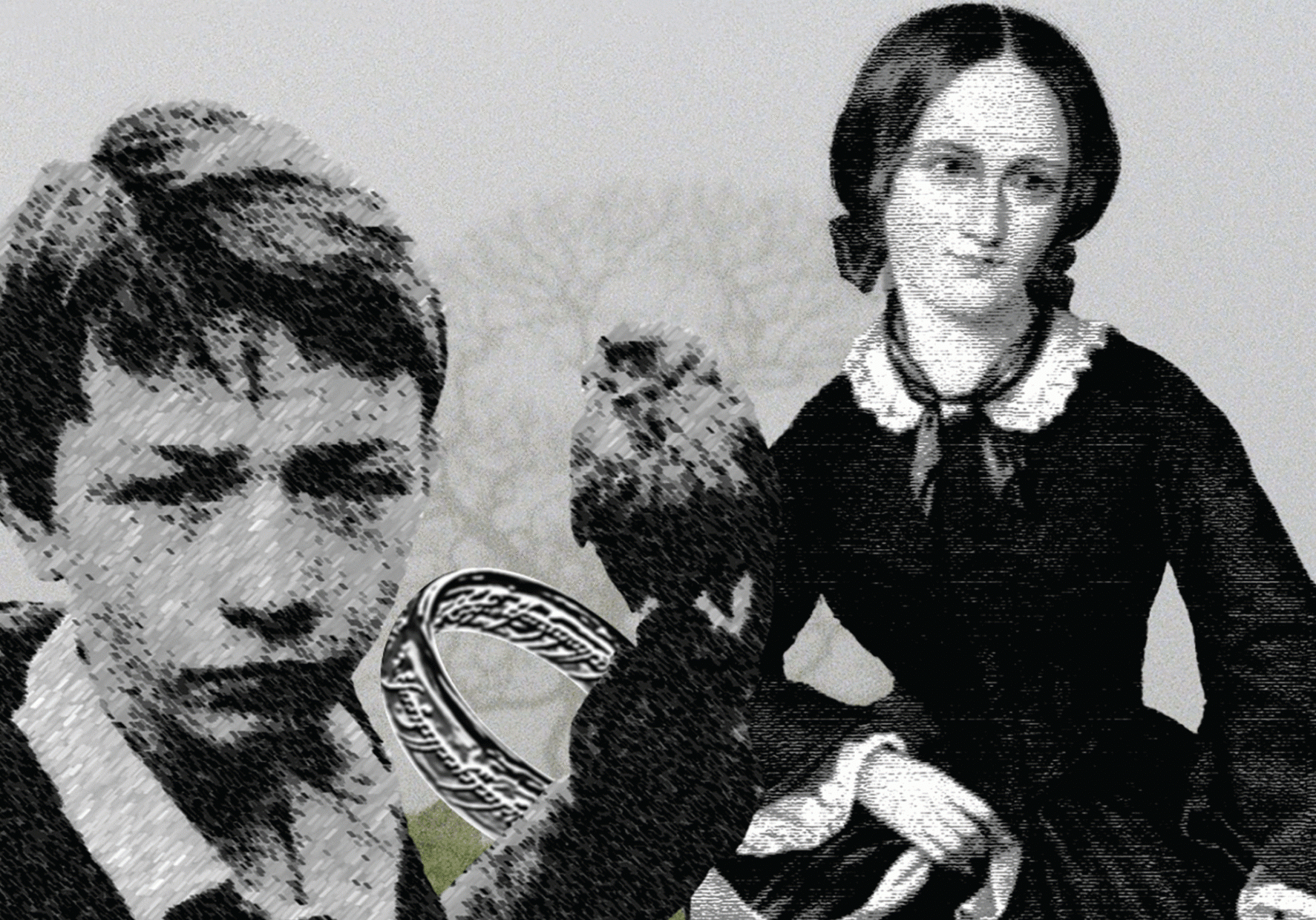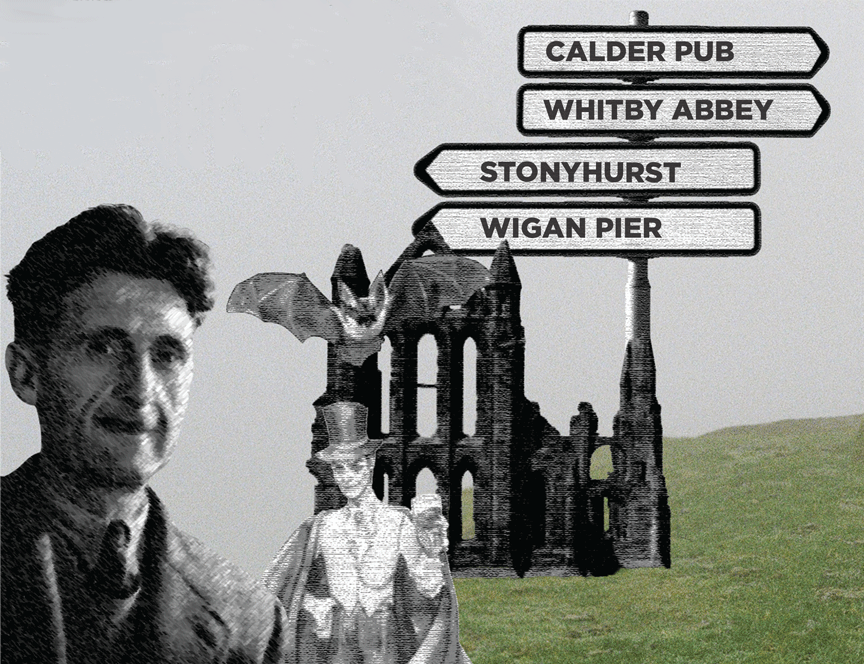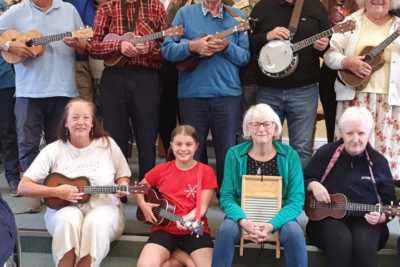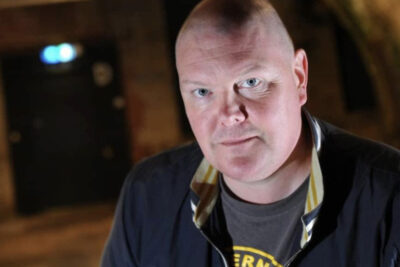
Literary Locations
by Northern Life
NORTHERN LOCATIONS THAT HAVE INSPIRED NORTHERN WRITERS...
These three literary lads and lasses were inspired by Yorkshire’s windswept coasts and gloomy valleys…
WHITBY WI’ BRAM STOKER
Stoker arrived in Whitby in the middle of winter in 1890 for a holiday. Battered by freezing winds from the North Sea, Stoker presumably wasn’t sunbathing, but there was still plenty for him to sink his teeth into with Whitby’s windswept coastline and the Gothic ruins of the abbey provided Bram with the perfect inspiration for the setting of Dracula. The 1897 novel popularised the blood sucking villain of a vampire, usually a man with pale skin and an aversion to sunlight who enjoyed feasting on blood. Stoker’s Dracula hailed from Transylvania. In the book he boarded a ship to Whitby, along with 50 boxes of Transylvanian soil to keep him healthy. Inspired by tales of a shipwreck on Tate Hill beach, Stoker wrote a chilling tale of the boat journey with Dracula feasting on the blood of the crew members before arriving in Whitby as a black dog, and running up the famous 199 steps to Whitby Abbey’s remains.
CALDER VALLEY WI’ TED HUGHES AND SYLVIA PLATH
Legendary British poet Ted Hughes was born in the small town of Mytholmroyd, Yorkshire in 1930. His childhood home still stands, an unassuming end terrace in the middle of the small town, that you can even rent out for a holiday weekend. It is the perfect place to practice your poetry, especially if you venture out into the surrounding countryside. A trip down the canal will lead you to the Stubbing Wharf pub, where Ted Hughes once tried to convince Sylvia Plath to move to “gloomy” Calder Valley with “a gorge of ruined mills and abandoned chapels.” Hopefully Sylvia saw the beauty of the valley as she was buried above it, in the graveyard of Heptonstall Church. Sylvia died by suicide at the age of 30, and poetry lovers from around the world climb the steep path from Hebden Bridge to pay their respects.
BARNSLEY WI’ BARRY HINES
The tragic story of Billy and his kestrel Kes captured life in South Yorkshire for many in the 60s and 70s and remains famous to this day, in part because it is required reading in many secondary schools. The book, written inYorkshire dialect was the best-known work of author Barry Hines, a PE teacher from Barnsley who wrote his books in the school library once the children had gone home for the day. Taking inspiration from his brother Richard who had tamed a hawk called Kes, Barry wrote his most famous novel A Kestral for a Knave. Barry Hines died at the age of 76 after a diagnosis of Alzheimer’s. A statue of the book’s main character Billy Casper and his kestrel was unveiled in the author’s home town last year.
Lancastrians can proudly claim a stake in playing a starring role in these three novels taken back by our glorious architecture and desolate moors…
LORD OF THE RINGS WI’ TOLKIEN
Stonyhurst College, near Clitheroe, appears to throw some type of magical writing spell on individuals, assisting them in creating a great narrative, since JRR Tolkien spent time there in the 1940s when visiting his son John, who was training to become a priest. Tolkien is thought to have written his follow-up to The Hobbit, fantasy adventure trilogy, Lord of the Rings, during his time there, with his name appearing in the visitors’ book several times. Tolkien enjoyed visiting the Ribble Valley countryside near the college, and names from the area are used in the novels, such as Shire Lane in Hurst Green and the River Shirebourn.The surrounding landscape is beautiful, undulating, and braided with rivers and streams; to the south, the imposing presence of Pendle Hill; and to the north, the desolate solitude of the Forest of Bowland’s high moors. You may imagine that this heady combination, consumed while trudging across hill and dale, possibly assisted by a few pints at the Shireburn Arms, went into the literary stew that generated the Lord of the Rings.
JANE EYRE WI’ CHARLOTTE BRONTË
Although much more associated with Yorkshire, The Brontë sisters actually spent much of their lives in Lancashire walking from their family home in Haworth across the South Pennine Moors. Charlotte and Emily Brontë are thought to have frequently visited the picturesque Wycoller near Colne and in particular, the isolated ruins of Wycoller Hall. It was supposed to have been Charlotte Brontë’s inspiration for Ferndean Manor where Jane Eyre finally found Rochester, injured and blinded by the Thornfield fire which his mad wife had started. Wycoller is set in a wooded valley, surrounded by beautiful rolling countryside, between wild moorland and brooding Pendle Hill. What remains of Wycoller Hall now are ruins, however, there is a haunting yet romantic splendour about the place and its surroundings. Very Brontë-esque. Lancashire is proud of its relationship with the Brontës, even if it has to play second fiddle!
THE ROAD TO WIGAN PIER WI’ GEORGE ORWELL
In January 1936 Orwell was commissioned by Victor Gollancz to make a study of unemployment in the areas of the north of England and to write about what he had seen. In the town of Wigan, coal descended from the Lancashire hills and canals ascended from the estuary of the Mersey River. Since Wigan had the most affordable coal rates and the most affordable transport prices, the area quickly gained popularity with businesses of all kinds, including those producing cotton-based textiles and metal fabrication. A short distance from the town centre, the Wigan Canal Basin developed a variety of sophisticated cargo handling, warehousing, and manufacturing operations, and the neighbourhood turned into a collection of filthy factories and subpar housing, as famously depicted by George Orwell in The Road to Wigan Pier.
NorthernLife Sept/Oct 22





